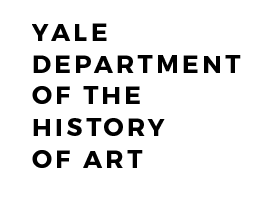Courses
Pre-Columbian Architecture
A survey of pre-Columbian architecture and city planning from the Andes to the southwestern United States. Principal sites considered include Machu Picchu, Cuzco, Tiwanaku, Chichen Itza, Tikal, Monte Alban, Teotihuacan, Mesa Verde, and Pueblo Bonito. Attention to domestic architecture, construction techniques, and archaeoastronomy.
Religion and Visual Culture in the Eastern Mediterranean, 313–800 C.E.
The use of art and architecture for both competition and communication in religions of the eastern Mediterranean, from Constantine through the rise of Islam. Forms of visual expression during the period; ways in which images of the divine shaped and reinforced cultural and social structures.
Roman Architecture
The great buildings and engineering marvels of Rome and its empire. Study of city planning and individual monuments and their decoration, including mural painting. Emphasis on developments in Rome, Pompeii, and central Italy; survey of architecture in the provinces.
Roman Art: Empire, Identity, and Society
Masterpieces of Roman art from the Republic to Constantine studied in their historical and social contexts. The great Romans and the monuments they commissioned—portraits, triumphal arches, columns, and historical reliefs. The concept of empire and imperial identity, politics and portraiture, the making and unmaking of history through art, and the art of women, children, freedmen, and slaves.
Sacred and Profane in Late Medieval Europe
The interdependence and collaborations of the sacred and the profane in late medieval European literature and visual art. Close reading of primary texts; analysis of paintings, sculptures, manuscripts, printed books, and prints in Yale University collections. Ways in which disciplinary difference matters to the understanding of culture.
South Korean Urbanism
Modern and contemporary South Korean urbanism and its relation to discourses of the everyday. Focus on Seoul as a case study, with attention to commercial environments, ephemeral urban events, and local street cultures. Key texts by philosophers, historians, architectural theorists, and art historians analyzed in the context of artistic and architectural responses to Seoul’s urbanism in recent decades.
The Art of Ancient Palaces
Introduction to the art and architecture of palaces in ancient Egypt, Mesopotamia, and the Bronze Age Aegean. Special attention to palatial workshops (painting, sculpture, pottery, faience, glass, ivory, metal) in cultural context. Emphasis on the iconography of power, including the establishment within palatial complexes of the world’s oldest botanical and zoological gardens.
The Art of Dionysos: Drink, Drama, and Ecstasy
Artifacts of Greek art and architecture made in honor of Dionysos, the god of wine and theater, whose worship involved ecstatic experiences. The Great Dionysia, a festival where theatrical productions were performed, as the source of inspiration for artifacts and architectural monuments. Objects and structures such as painted vases and theaters as means of keeping the realm of Dionysos present in daily experience.
Relic, Image, and Body in the Buddhist Tradition
Worship of relics and images is commonly observed in various religious traditions. As such, relic and image worship has comprised core doctrinal debates and shaped religious practices across many religions. Debates about the relic and body inevitably involved the notion of divine bodies as well as human bodies. Using the Buddhist tradition as a focal point, this course considers the issues of the relic, image, and body from a broad cross-cultural context. Topics to be discussed include the controversial aniconic period from early Buddhist history in India; the competition for religious authority between early Buddha images and Buddha relics; stories of miracles performed by relics and images; the understanding of the relationship between the image and the physical body of Buddha by medieval Chinese; the development of the theory of Three Buddha Bodies and their visual representations in China and Korea; and contradictory views of the female body in Buddhism. Students are encouraged to bring insights from their own perspectives and cultural traditions from the West, the Near and Middle East, and other regions of Asia.
Religion and the Performance of Space
This interdisciplinary seminar explores categories, interpretations, and strategic articulations of space in a range of religious traditions in the United States. The course is structured around theoretical issues, including historical deployments of secularity as a framing mechanism, conceptions of space and place, and perceived relations between property and spirituality. Examples of the kinds of case studies treated in class include public displays of religion, the enactment of ritual behaviors within museums, the marking of religious boundaries of various sorts, and emplaced articulations of “spiritual” properties or real estate. Several campus events, including research group presentations, are coordinated with the seminar.
Permission of the instructor required; qualified undergraduates are welcome.
